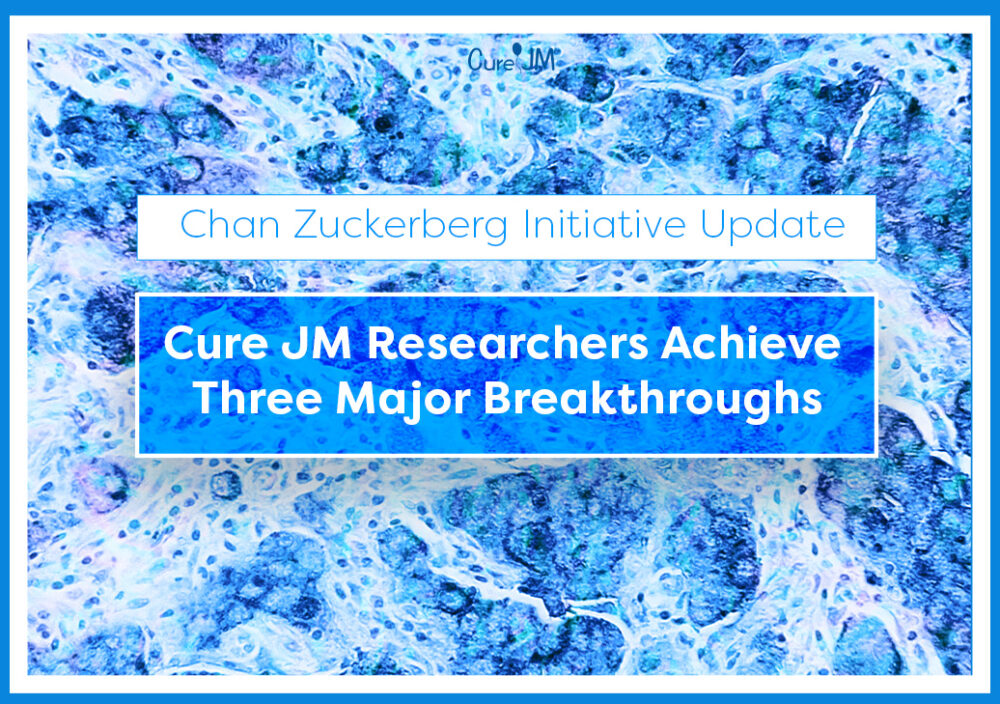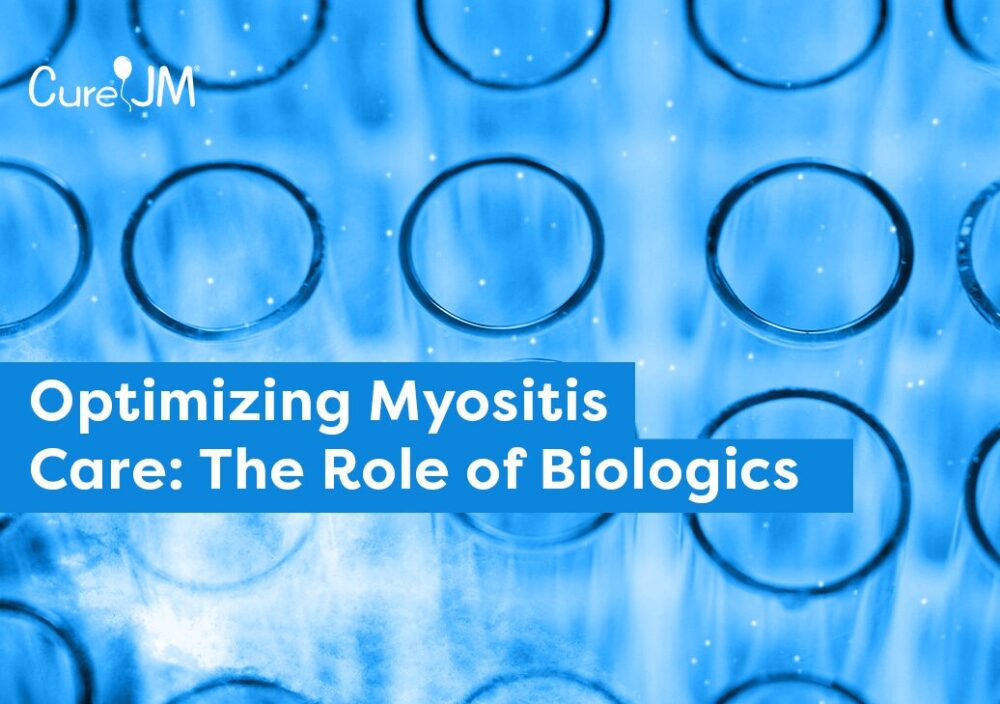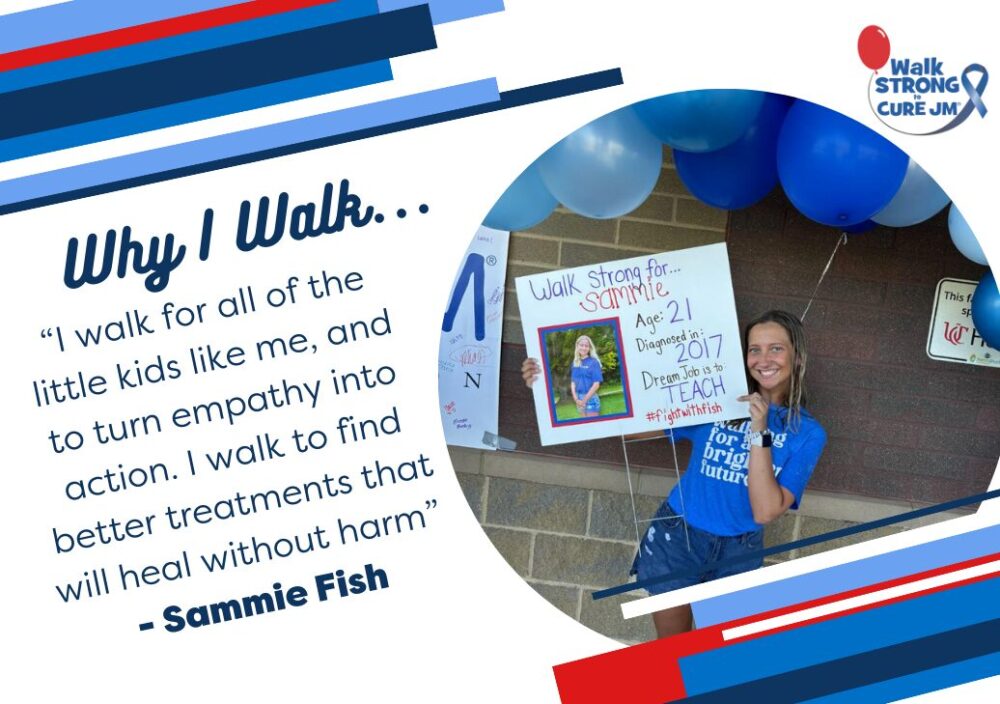Last year, Cure JM and a team of collaborative researchers received a prestigious $2 million grant from the Chan Zuckerberg Initiative to advance our understanding of juvenile myositis (JM). The goal? To discover new markers in the blood that could lead to more precise, personalized care for children with JM. We are excited to share some of the early results from this research, which were recently presented by Dr. Jessica Neely of UCSF during the Cure JM Northern California Chapter Meeting.
So far, researchers have studied 3,000 different proteins in the blood of 80 patients with juvenile myositis (JM) to understand how the immune system and body tissues are affected by the disease. Here’s what they’ve discovered so far:
Key Findings:
- Vascular Damage is a Major Factor in Juvenile Myositis: Researchers found that blood vessels are significantly damaged in JM—more so than muscle and skin cells. This is important because understanding the root causes can help us course correct the disease. Many patients may have experienced symptoms related to blood vessel damage, such as nosebleeds, flushed skin, cold sensitivity, swelling, pain, or even high blood pressure.
- Blood Vessels Don’t Work Normally in JM. Understanding This Could Help Us Find New Treatments for JM. The cells that line the blood vessel are the most affected during active disease. This abnormal behavior suggests that blood vessels in JM patients don’t function as they should. This is a crucial finding because there are existing treatments for blood vessels that aren’t currently used in JM. This discovery could lead to new treatments that directly address blood vessel issues in JM, potentially helping patients live without symptoms.
- A New Potential Lab to Detect Disease Activity Earlier: A protein called “soluble FLT1” has been identified as a potential new marker for disease activity in JM. This protein comes from blood vessels and might help doctors detect flares and track disease progression more effectively in the future. While we currently don’t have a way to measure FLT1 easily, researchers are working on developing a new tracking method.
What’s Next?
- Predicting Calcinosis: Researchers are working on predicting whether a patient will develop calcinosis (a condition where calcium deposits form in the muscles and skin) at the time of diagnosis and how it might be prevented.
- Developing New Diagnostic Tools: The team aims to create a new diagnostic panel that includes the new protein (called FLT1), giving doctors a more comprehensive way to assess JM. This could help doctors identify a flare earlier, allowing earlier treatment and better long-term health.
- Targeting Blood Vessels in Treatment: Currently, there are no treatments specifically targeting blood vessels in JDM. By identifying or developing such treatments, we could potentially improve symptoms and address one of the root causes of the disease.
Conclusions:
- Blood vessels are significantly impacted in JDM, with abnormal behavior seen in their cells.
- The protein called “soluble FLT1” shows promise as a marker for monitoring blood vessel health and disease activity.
- This research may lead to better ways to track the disease, identify flares earlier, and develop new treatments that focus on blood vessels.
We are incredibly grateful to the team of researchers leading this groundbreaking work, including Dr. Jessica Neely at UCSF, Dr. Jessica Turnier at the University of Michigan, and Dr. Andrew Heaton, Cure JM’s Chief Scientific Officer. Their collaboration with Dr. Jeff Dvergsten from Duke University and Dr. Lauren Pachman from Lurie Children’s Hospital is paving the way for a brighter future for children with JM.
Stay in touch on breaking research updates at www.curejm.org.




